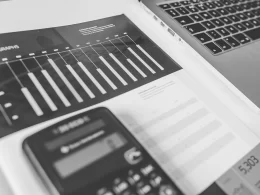Short-term liabilities are an important part of any company’s financial planning. In this article, we will discuss what exactly these types of liabilities are and what they are. We will also look at how they affect the operation of the company.
What are short-term liabilities? Definition of the term
Current liabilities are time-bound financial obligations that must be paid within one year or less. Current liabilities are normally expressed as items on the financial balance sheets of companies. Current liabilities include debts such as bank loans, accounts payable, accounts receivable, trade payable, tax liabilities and others.
Current liabilities are also considered an obligation of a company to pay wages or other expenses during a given financial period. They are usually repaid with money the company earns from sales or other sources of income. Current liabilities can be used to finance the company’s current needs and expenses to achieve business goals.
Current liabilities on the balance sheet
Current liabilities are one of the most important elements of the balance sheet. These are any debts that the company has committed to perform within one year. They can be obligations to suppliers, lenders, borrowers and other external parties. Current liabilities are very important because they affect a company’s bottom line in a given period. For example, if a company has a large amount of short-term liabilities, it will need to generate enough revenue to pay them off. Short-term liabilities can be used to determine how well a company manages its finances and whether it can meet its obligations within a certain period.
What counts as short-term liabilities?
Short-term liabilities are those that must be paid within one year or less. They are usually related to current expenses and are the main component of all financial liabilities. Typical current liabilities include: short-term loans, trade debts, debts for tax receivables and insurance premiums, liabilities for payment of wages, liabilities for payment of fees for services and purchases, liabilities for loans and borrowings.
All of these liabilities must be repaid within one year or less. They are the main component of the balance sheet of short-term liabilities. They definitely help maintain the company’s financial stability and are one of the most important elements of its business. Therefore, managing short-term liabilities should be one of the priorities for any company.
Short-term liabilities – the most important information
Short-term liabilities are official financial obligations that must be met during the year. They are particularly important for companies because they directly affect their financial operations and can affect their ability to meet other obligations. Current liabilities can include loans, advances, invoices, pledges, letters of credit and other obligations.
Companies must be particularly careful in determining the level of short-term liabilities. This is because they can have a direct impact on a company’s liquidity, as well as its ability to meet other obligations. In particular, excessive debt should be avoided and an adequate level of collateral should be maintained.
In addition, companies should remember that short-term liabilities can only be replaced at times when no additional costs should be incurred. It is also important to regularly monitor the level of short-term liabilities to ensure that they are high enough for the company to meet its obligations.
Short-term liabilities are an important part of a company’s income and expenses, and great care should be taken in determining them. Before making any decisions, consult a financial advisor to ensure that the company will be able to meet all its obligations and avoid any financial problems.




